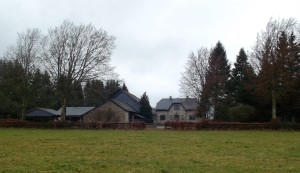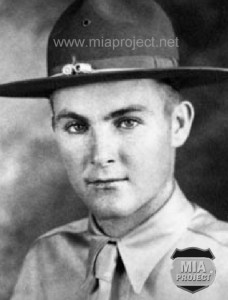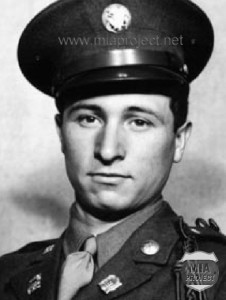By William C. Warnock & JP Speder
« Never in the field of human conflict was so much owed by so many to so few ».
These words were Sir Winston Churchill’s after the Battle of Britain. In the following five years, many such actions repeated around the globe. Decisive battles were won by small groups of heroic men. They changed the course of the war and probably the course of History.
The Battle of the Bulge was no exception. The siege of Bastogne is the most known example. Largely emphasized by media, the impact on the whole battle remained limited. For knowledgeable historians however, History ran its course in many other places. The Lausdell crossroad is one of them. Maybe more than anywhere else in the Bulge, so many owed to so few.
Early December 1944, the 2nd Infantry Division, in position east of StVith, was trucked north to an assembly area near the twin villages of Rocherath-Krinkelt, Belgium. US V Corps had planned an offensive aimed at capturing important dams located on the Roer River, just a few miles into Germany. The attack would be spearheaded by the 9th Infantry Regiment. Their mission was to punch a hole in the defense of the West Wall and capture the Wahlerscheid crossroad. The 38th Infantry would then pass through and attack the dams. The 23rd Infantry was hold in reserve. The attack was scheduled for December 14, 1944.
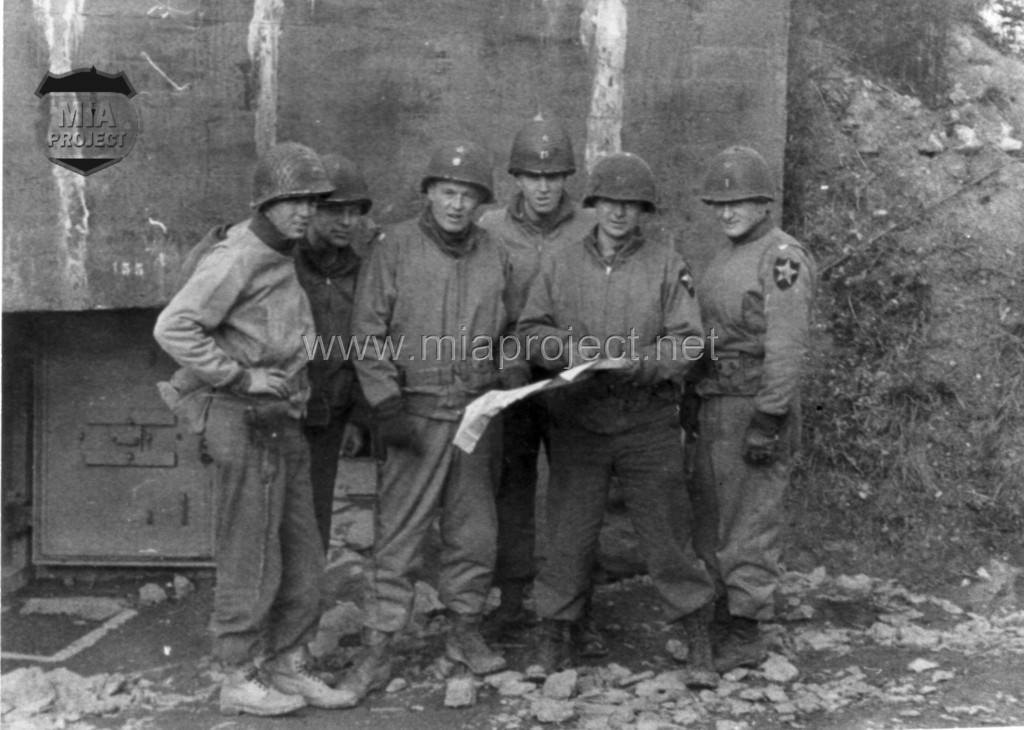
Group photo of the 1st Battalion staff taken in November 1944 along the Siegfried Line. From L to R: 1Lt John C. Granville ( Artillery Liaison Officer), Capt William I. Felton (S-2), LtCol William D. McKinley (Batt CO), Capt P.J. Lemm (temporarily acting Batt Exec Off), Capt Glenn M. Harvey (S-3) and Capt Francis W. Schumacher (S-4) – courtesy Jim McKinley.
After three days of brutal fighting, GI’s of the 9th Infantry had seized the crossroad. The losses were important and the terrible weather conditions inflicted even more casualties. During the day, it warmed enough for the snow to melt, soaking clothes, webbing and leather shoes. At night, the mercury fell and everything froze. After three days of grinding misery, the 1st Battalion, 9th Infantry, had dwindled to 22 officers and 387 men out of a total of about 750 men.
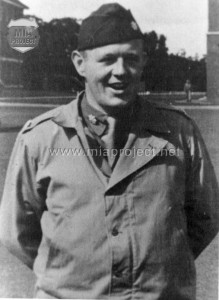 The 1st Battalion, 9th Infantry was commanded by LtCol William D. McKinley. He was the son of General James F. McKinley and grand nephew of former President William McKinley. Born in 1916, he grew up on Army posts from Georgia to Panama Canal Zone. He graduated from the US Military Academy of West Point and was commissioned 2nd Lieutenant in 1937. William McKinley had a seldom encountered fighting spirit and esprit de corps. At age 26, he was already a Lieutenant Colonel and commanding a battalion of infantry. He was an inspiration for his men.
The 1st Battalion, 9th Infantry was commanded by LtCol William D. McKinley. He was the son of General James F. McKinley and grand nephew of former President William McKinley. Born in 1916, he grew up on Army posts from Georgia to Panama Canal Zone. He graduated from the US Military Academy of West Point and was commissioned 2nd Lieutenant in 1937. William McKinley had a seldom encountered fighting spirit and esprit de corps. At age 26, he was already a Lieutenant Colonel and commanding a battalion of infantry. He was an inspiration for his men.
The night of December 16, McKinley’s Executive Officer, Major William F. Hancock, was outside the CP and recalled : » … It was almost dark and all was quiet. I walked out of the CP and looked to the south. I like to look at the sky at night if it isn’t cloudy or foggy. I looked way south and there was a big cloudbank. It looked like a blue cloudbank for miles and miles and miles. Against that cloudbank there were flashes of light. At first I thought it was lightning. I come from South Carolina where we had a lot of clouds in the late evening with a lot of lightning and rainstorms, once or twice a week. I could hear the roar to the south and I noticed that it continued all the time. It was just like artillery fire and I thought that it must be flashes from artillery fire. Then I decided that it was probably an attack kicking off to our south and that’s what it really was. I went back to the CP so that I could tell Colonel McKinley what I saw, but he was taking a nap that was long overdue. He hadn’t had much sleep during the attack. Neither had I, but I had taken my nap earlier. About that time the phone rang. It was Colonel Steele from Regiment. He told me that he would like to speak to Colonel McKinley … »
To his dismay, McKinley was notified that orders had been issued for a complete withdrawal the next day. The German attack further south was powerful and the entire 9th Regiment had orders to pull back and McKinley’s battalion was to defend an area five miles to the south. Word of the pull back spread like wild fire among McKinley’s men. After all the terror and death, they were giving up the place without to fight. Wahlerscheid instantly was renamed ‘Heartbreak Crossroad’. Nobody knew the full extent of the German offensive to the south. Nobody knew about the force of nearly 1000 tanks, 2000 artillery pieces and 200.000 men secretly mustered by Hitler for his winter offensive. The men of McKinley were in real peril and had no inkling of it.
In the mid afternoon of December 17, McKinley and his men began the chore of moving south to meet the German attack. Infantrymen marched south through the fog and mist. They crossed into Belgium from whence they had originally come. The evergreen forest on either side of the road seemed to stretch forever. The men trudged along with bleary eyes and a sad slouch. The long line of GI boots churned a path through the snow and muck on the main road to Rocherath. Among them Captain Glenn M. Harvey, McKinley’s S-3 (Operation Officer). » …I walked about one mile down the main road when LTC McKinley’s jeep picked me up and we continued down the road. We met General Robertson. He appeared to me to be very concerned. He briefly explained the situation and told McKinley generally where he wanted us to deploy… »
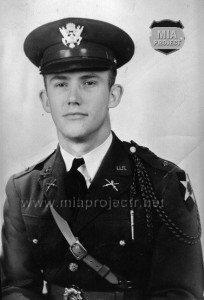
Major William F. Hancock, Battalion Executive Officer. Pictured here as 1Lt in 1939.
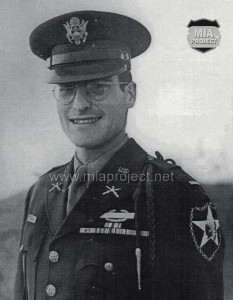
1Lt Allyn H. Tedmon. Co D’s 2nd HMG platoon leader. He received the Silver Star for gallantry in action at Lausdell.
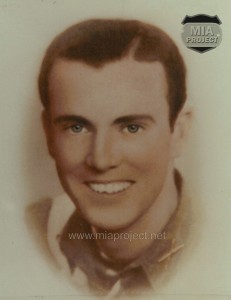
1Lt John C. Granville. Liaison Officer with Battery A, 15th Artillery Battalion.
Robertson had already sent elements of the 3rd Battalion in the form of Company K, a section of machine guns of Company M, as well as the A&P platoon of the HQ Company. McKinley received instruction to take command of all these units and attach them to his battalion. The crossroad to defend lay amid a patchwork of cow pastures, which the locals called Lausdell. It is situated 1 mile north east of Krinkelt-Rocherath, exactly half way between the thick forest and the twin villages. Waist high hedgerows separated one pasture from another and served as fences. Two buildings stood at the crossroad, a farm and an adjacent barn owned by a dairy farmer, Albert and Franziska Palm. The main trail passing by Lausdell was used as main supply road for two American infantry battalions in position in the forest but also appeared on the German battle map as « Rollbahn A », the northernmost of the five penetration routes of the 1st SS Panzer Korps.
Upon reaching Lausdell, McKinley found a large dugout abandoned by another unit and set up his CP. As he was selecting company areas on a map with Captain Harvey, McKinley was called to regiment for final orders. He instructed Hancock and Harvey to plan the defense of the crossroad. « …The rifle companies moved into the selected areas upon arrival… » continued Capt Harvey. « … Small location changes in could be made based on the terrain but contact must be maintained with units on either flank. Orders were given to dig in as fast as possible and insure lanes of fire were coordinated where possible. These decisions were made as it was starting to get dark. This was not a job that could be accomplished in 5 minutes and we checked each of the units and helped where we could. The phone lines and radio circuits were set up quickly. We kept the wire people with us all the time. They had unloaded sufficient wire before their vehicles moved to the rear… »
Major Hancock continued: « … Capt Garvey and I selected the positions for the heavy machine guns. We set them up in pairs in position that provided complete coverage of our defense sectors. The guns were set so thin cones of fire would cross at about 150 yards to the front and not above man’s head at 250 yards. Mortar impact areas were selected close to the lines with emphasis on areas the MG’s could not reach. Artillery impact areas were on the road, from our line to the forest, a 1000 yards distance to our front… At 6PM, we came back to the CP. Col McKinley had returned. Company Commanders and Battalion staff were there sitting on the floor. McKinley told us that a German Panzer unit was heading for the crossroad. We were to hold at all costs until relieved. Division and Corps were actively forming the defense of the road net in the villages of Krinkelt and Rocherath and on the Elsenborn Ridge behind us. McKinley ordered me to form 22 bazooka teams, 8 to each of the two front companies, 6 in reserve to dispose as he would see fit. They would move and attack any and all tank that come within range and remain able to move at will. He also ordered me to form mine laying teams, daisy chains to be pulled across the road in front of tank column after their mine sweeping details had passed. After the briefing, he told the officers to go back to their company and make sure what is meant by « hold at all costs » and is well understood by the command and down the line… »
While McKinley was talking to his officers, 1Lt John C. Granville, his Artillery Liaison Officer was trying feverishly to establish contact with the Fire Direction Center (FDC) of the 15th Artillery Battalion with an ill-working radio. Fortunately, Granville’s fortune’s changed when 1Lt John W. Cooley and his forward artillery observation detail, and a working SCR-610, arrived at the CP.
When all was taking place, the rattle of small arms fire emanated from the forest, about one mile east. Bedraggled soldiers came out of the woods and hustled toward Lausdell. Some wore 2nd Infantry Division patches, others the Checkerboard patch of the 99th Division. Many looked stupefied by what they had seen. Their units had ceased to exist, crushed by the steel might of enemy tanks. Some men stayed to fight alongside McKinley’s men, others fled.
By the time, visibility had dwindled to almost nil and a thick ground fog was enveloping the Lausdell defenders. All remained calm until 7:30 PM when the men heard hums of big engines and the distinctive clatter and squeak of turning tracks. The men had been informed that friendly troops and tanks were still in the forest and might pull back through Lausdell. These were in fact a group of four Jagdpanzer IV/70L of the 1. Kp, SS Panzerjäger Abt 12, accompanied by one infantry platoon of SS Panzergrenadier Regiment 25. This small spearhead was commanded by SS Oberstürmführer Helmut Zeiner. Sgt Joe Busi and S/Sgt Billie Floyd were in the ditch of the dirt road. The Jagdpanzers suddently loomed out of the dense fog, rumbled past Busi and Floyd and splashed the two men with mud and slush. In the turret of the steel monster, the commander gave the two motionless GI’s the vulgar middle finger gesture as he looked down contemptuously from his open hatch.
« …The SS men were talking and joking like if war was over,… » recalled Busi, « …They scarcely looked at us and seemed unaware they were in the middle of an American infantry battalion. They passed through without a shot fired. They disappeared in the night and continued toward Krinkelt… »
Not long after, a second group of tanks approached. This time nobody doubted they were Germans. As the monsters rumbled closer, Sgt Busi, Sgt Charley L. Robert and PFC Harlin F. Coffinger of Co D began to lay mines on the road.
« … That was the start of a night I will never forget… » Coffinger remembered. « … it was real dark when we heard tanks coming down the road. Sgt Roberts gave me mines to put on the road. I swear that I could almost touch the gun of that tank. I ran back and jumped in the hole. It sounded like an alarm clock when it blew up.. »
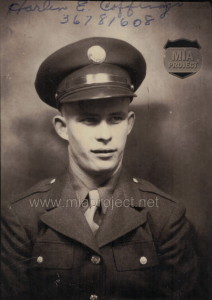
PFC Harlin F. Coffinger
The lead tank was Panther 135 of the 1.Kp, SS Panzer Regiment 12. The explosion of the mine laid by Coffinger broke its left track which peeled off as the tank ground to a standstill. Fire erupted instantly. The crew of Panther 135 cut loose with the 75mm canon and both machine guns. The spray of bullets killed several men, including S/Sgt Billie Floyd. The following tank was Panther 127, it by passed the crippled 135 and turned left to Rocherath. Pvt William A. Soderman of Co K stood up from behind a hedgerow with his bazooka. The former butcher from Connecticut squeezed the trigger and saw his rocket shattering the left track in a wrenching explosion. Inside Panther 127, the crew began firing HE shells. The turret rotated a few degrees and the cannon fired out a shell. Another shot followed after the turret cranked around a few degrees. The two machine guns were blindly blasting away. From his position, Sgt Busi fired several rifle grenades at 127 but they bounced off. One however detonated at the base of the turret. « … The turret stopped rotating and didn’t move again … » added Busi, « … crewman quickly emerged from the tank and GI’s everywhere opened up. The crewmen perished one after another … »
American infantrymen open up on the accompanying SS Grenadiers. Machine gunners also joined the killing. Close to the crossroad, Cpl Sydney L. Plumley squirted a steady stream of bullets at SS infantry appearing out of the fog. He was working the trigger of his M1917A1 watercooled cal.30 while his assistant was feeding belt after belt of ammunition. Inside Panther 135, the crew carried on the fight. The cannon ignited hay in the barn of the Palm farm and turned the structure into a flaming torch. This increased visibility at Lausdell and the German took advantage of it. « … they were traversing the gun and fired at anything… » added Busi. The gun traversed once more and blew Plumley and his gun. The next shot clobbered the machine gun operated by Pfc Howard Ammons who died with his assistant, PFC Franck J. Cudro. The situation demanded quick reaction. Busi, Sgt Robert and S/Sgt Odis Bone of Co B grabbed a 5 gallon can of gasoline and crept up behind Panther 135. Roberts opened the can and with the help of Busi heaved it onto the engine deck. Bone then flipped a white phosphorous grenade. The gasoline ignited in a long flame. In the fog, the burning tank and the burning barn lit the crossroad with an eerie glow. Hundreds of tracers were crisscrossing at waist high. Roberts decided to run across the road and somehow survived. Bone, surmised he would be hit and stayed alongside the tank. Inside 135, the situation quickly became desperate and the crew bailed out. « …Our troops along the road just riddled them… » Bone later recalled « …The bodies of two lifeless Germans tumbled off the tank and landed just beside me… ».
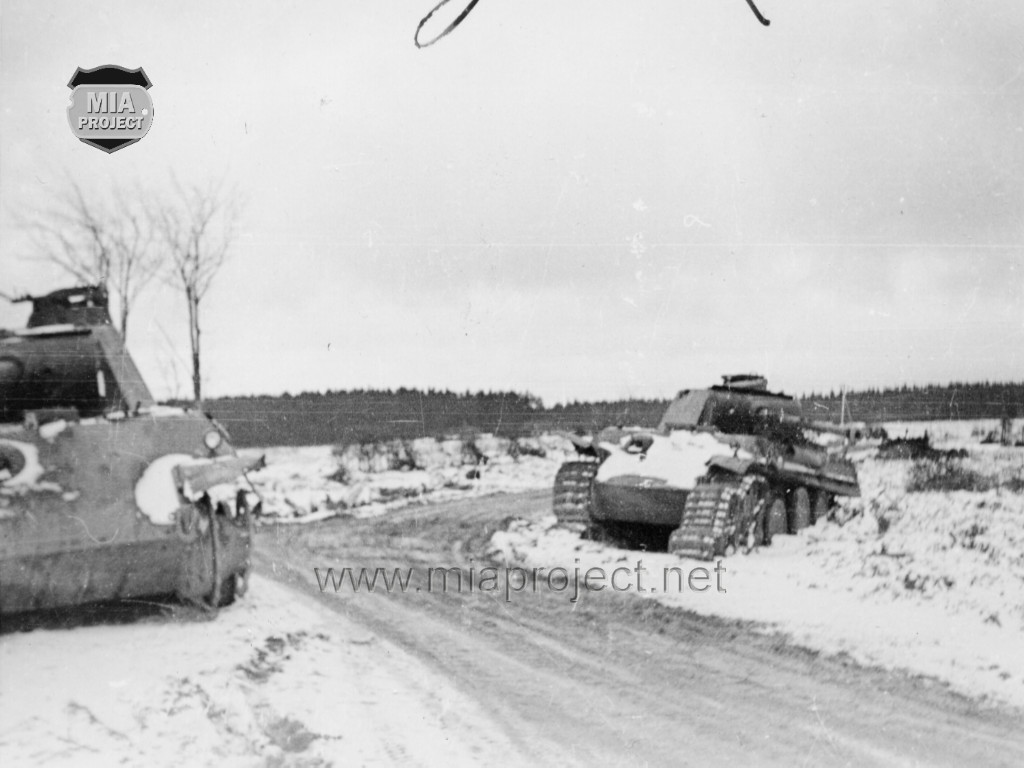
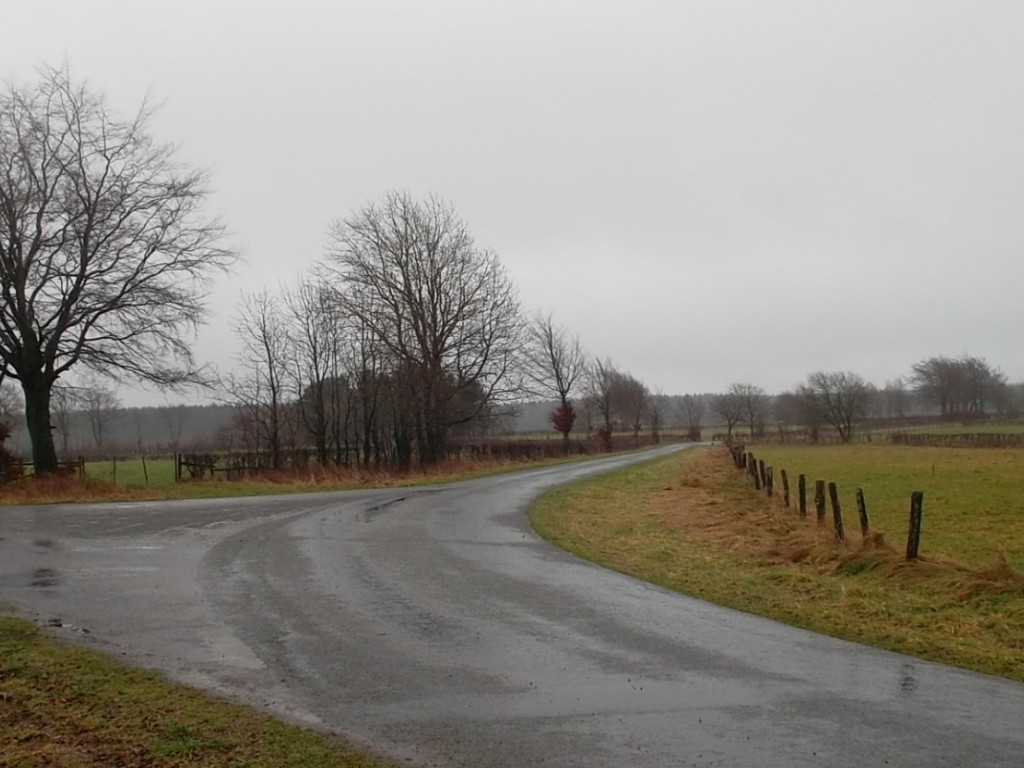
Slide mouse on photo for now & then view
-2014 view of Lausdell
– February 1945 view of Lausdell with Panther 127 (left) and Panther 135 (right)
In the Battalion CP, 1st Lt John Granville started to work orchestrating artillery support. « …My first requests of fire were given in an orthodox manner with sensing that fire was so many yards short or over, or so many yards left or right. Of course they were the sensings of the infantry personnel as relayed to McKinley… » Shells rained down, salvo after salvo and the German withdrew.
At about 10:30 PM, Company A radioed that more tanks and infantry converged on Lausdell from three different directions. Granville continued « … As the action thickened, I threw all orthodoxy to the wind and in unmilitary jargon, called for fire « on the right » or « on the left ». My call sign was Two-Four-One but I used my own first and last name. Now those sorts of commands would have made no sense had I not been able to give the precise coordinates of our CP as well as the coordinates of the first target. Having established those two points, I knew a line has been drawn at the FDC … » McKinley’s battalion was supported by the 12 Howitzers of the 15th Field Artillery and General Robertson managed to have support of six other battalions attached to the US V Corps. Granville continued « … I yelled in my microphone ‘if you don’t get it out right now, it’ll be too Goddamn late’… ». The radio remained silent and seconds crawled by.
Off to the west, the horizon lit up like dawn. Granville heard the distant rumble of howitzers followed by the whoosh of shells passing overhead. From his position, Major Hancock described the scene. « … You could hear the shells coming in and hit out in front of our position, about two hundred yards all the way to the woods. You could see the rounds bursting and you could see the flames. You could see the enemy tanks catching on fire and burning, then blaze up and explode in a flash of light. The artillery fire continued see-sawing back and forth and you could hear the Germans yelling and screaming bloody murder, as the tanks would catch fire and burn. This went on for about thirty minutes … »
Granville had opened the gates of Hell and he kept hollering for more and more shells. The waves of projectiles exploded in horrible cyclones of steel and flames. Shock waves from bursting shells quaked the earth and detonations merged into a single deafening din. Alert to the danger, the tank drivers veered into adjacent pastures but everywhere the SS infantry turned, they saw the bright scythe of Death.
By midnight, the wild melee had subsided. The sour stench of TNT hung in the air. Lausdell was still holding. Throughout the pre dawn hours, Lt Granville called for harassing fire. Artillery shells interdicted the edge of the forest, roads, trails, anywhere the enemy might be massing forces. Despite the harassing fire, the Germans renewed their assault at day break. « … you could hear the tank engines roaring in the distance, it sounded like a hurricane coming … » continued Major Hancock. « … The tanks would come out of the forest, move on down and close up, until finally the line of tanks was closed up from our lines all the way to the forest. They continued to move up and closed up just like box cars on a railroad track, practically bumper to bumper. Beside each one of the German tanks you would have a squad of infantry divided on either side of the tank. That is the way they were coming. They were to protect the tank from close-in bazooka fire … »
Despite American artillery raining down, the German foot troops reached the defensive line. PFC William Soderman darted along a ditch to engage enemy tanks. He leaped onto the road and fired at the lead vehicle. His rocket disabled it. The A Company Commander, 1Lt Truppner, was screaming on the radio that SS infantry had swamped his company area. His men were engaged in close combat and bayonet fight. Grenade battles had erupted in the whole perimeter. He told Granville to fire on his own position. Panthers prowled now around Lausdell. Truppner’s men ducked into their holes as shells burst pell-mell throughout the area. One projectile stuck the roof of a Panther, penetrated the thin steel skin and exploded inside. It disintegrated in a huge blast, sending big hunks of steel through the air. The lucky hit left torn and twisted metal strewn all over.
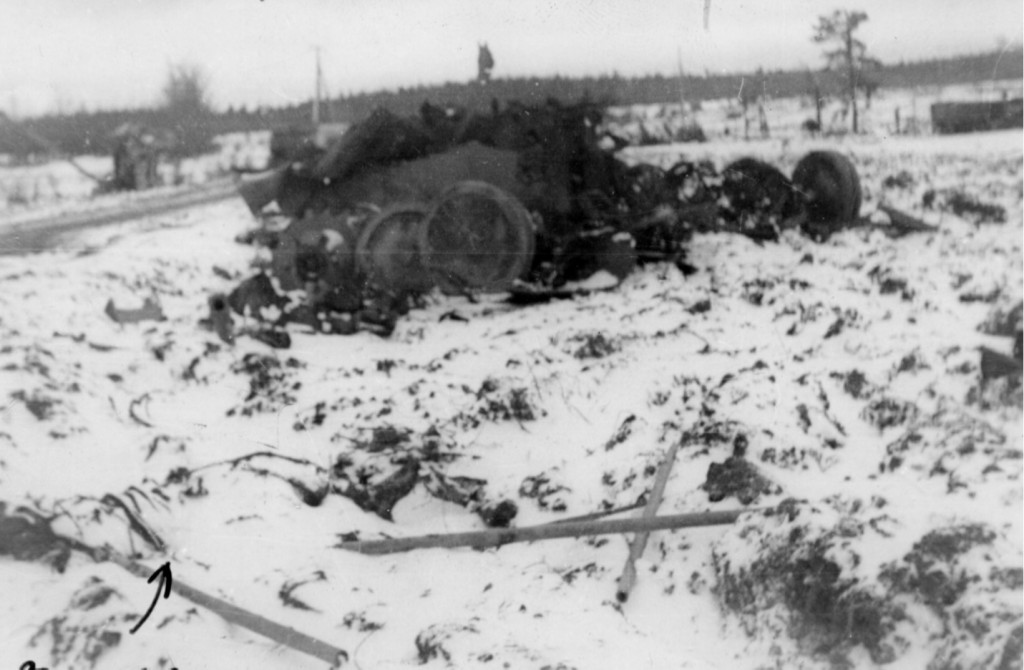
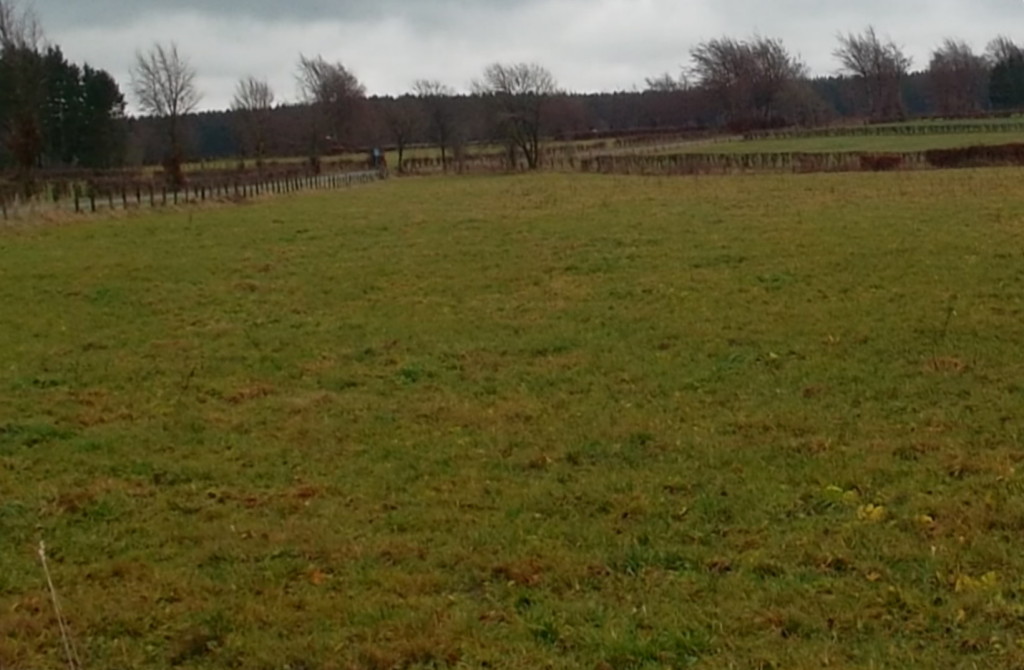
Slide mouse on photo for now & then view
-Lausdell 2014
-Lausdell Febr 1945. Ripped hulk of a Panther after a direct hit of an artillery shell. Presumably
the tank described by Major Hancock
To the other side of the crossroad, the situation was also critical. SS Grenadiers crept among the American foxholes. One SS man jumped in the hole occupied by PFC Roberto Gonzales of Company D. The startled GI fled and reported the situation to his platoon leader, 1Lt Allyn H. Tedmon. Tedmon asked Gonzales if he had killed the German. The answer was no. « Go back and kill him » said Tedmon. Gonzales carried out the order and disappeared in the fog.
At 10.00 AM, on December 18, McKinley received orders to pull back at noon. The main problem was to disengage his men locked in close combat. Good fortune appeared in the form of a platoon of Sherman tanks of Company A, 741st Tank Battalion. The platoon was led by 1Lt Gaetano R. Barcellona. The 29-year-old Texan had a reputation for boldness and had received a Distinguished Service Cross for his D-Day exploits. When asked if he wanted to fight, his answer flew off: « Hell yes! That’s what I’m here for! »
Barcellona separated his platoon in two pairs of Shermans. One pair attracting the eyes of Panther crews and the other pair flanking them. Sherman gunners scored two hits on one Panther and three on another. Barcelona scored himself another hit on a third Panther. With German tanks momentarily dispersed, McKinley’s men began falling back. T/Sgt James L. Bayliss of Co D carried a heavy machine gun to an advantageous position and put his weapons into service. Bayliss, a career soldier of Cedar Bayou, Texas, swept enemy infantry with a hail of bullets. Barcellona chasing Panthers and Bayliss pining down SS infantry, many of McKinley’s men succeeded to disengage and escape. As Bayliss hammered out .30 cal slugs, one of the Panther spotted him and fired at him. The shell flew wide. Despite the danger, Bayliss never ceased to fire. The Panther cut loose and missed again. Bayliss never flinched and ignored the tank. He died in the blinding flash of the third shell.
« … Colonel McKinley sent me out about half way between the front lines and the assembly area that we had selected… » remembered Major Hancock. « … He told me to keep count of the men as they fell back to the assembly area so that we would know when everyone has cleared. With the artillery barrage and our four tanks counter-attacking, Company B cleared pretty well. As I remember, Company B came out with less than twenty men, perhaps nineteen. Company A got five men out. I still don’t know how they got out. I think that one of them was a corporal or a sergeant who was wandering around over the back area reconnoitering for a route to get out. He and three or four others got out—a total of five men. Company C came out with the majority of its Company that had been whittled down to probably fifty men. D Company was intact except for the machine guns. They left some good men, most of them were either wounded or dead. K Co came out with 5 men, Battalion staff was complete, plus several enlisted men of Battalion headquarters. We had gone into defense with 600 men and officers. »
The last Americans to escape were LtCol McKinley, his S-3, Capt Glenn Harvey and Capt Louis C. Ernst, the commander of Co D. Capt Harvey recalled, « … As McKinley and I left on the run, the Germans were yelling their equivalent of « hands up ». How we got out of there without being shot or captured is still a mystery to me … »
In February 1945, when the sector was recaptured, Grave Registration personnel retrieved 32 dead GI’s from Lausdell.
During those crucial hours, McKinley’s men and his artillery support have staved off the 12th SS Panzer Division for 18 hours. Without that delay, the enemy would have been in position to inflict a devastating defeat upon the 2nd and 99th Divisions and beyond would have placed the entire 1st US Army in a dire situation.
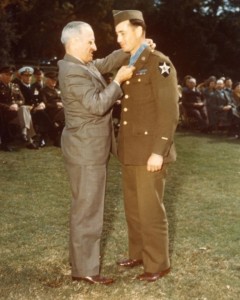
Bill Soderman receives the Medal of Honor from President Harry S. Truman on the White House lawn, October 12, 1945.
McKinley’s battalion was awarded the Presidential Unit Citation and 14 men decorated.
-PFC William Soderman, of Co K, was awarded the Medal of Honor,
-T/Sgt Bayliss of Co D and 1Lt John S. Milesnick, commander of Co B, received the Distinguished Service Cross (posthumously for Bayliss).
-11 men received the Silver Star, 4 posthumously.
LtCol McKinley recommended Lt Barcellona for a Silver Star but it was downgraded at higher headquarters to Bronze Star. It is not known if PFC Gonzales carried out his order to the full measure but he survived the fight at Lausdell and is not on the casualty list.
« … I would like to say a little something about Col. McKinley … » concluded Major Hancock. « … His esprit-de-corps was the highest of any man that I have ever seen. He believed in his Command, he believed in his Regiment and he believed in his Division with all of his heart. He would not let any of them down to save anybody. His esprit-de-corps was felt throughout his Battalion – from the enlisted men, particularly the ‘old sergeants’, to the officers. That is one of the main reasons I can think of why his Battalion was able to hold out as it did in this defense. The men just weren’t going to give up and they didn’t. They held out to the last man – literally … »
Those brave men upheld their 9th Regiment motto : « Keep up the fire ».
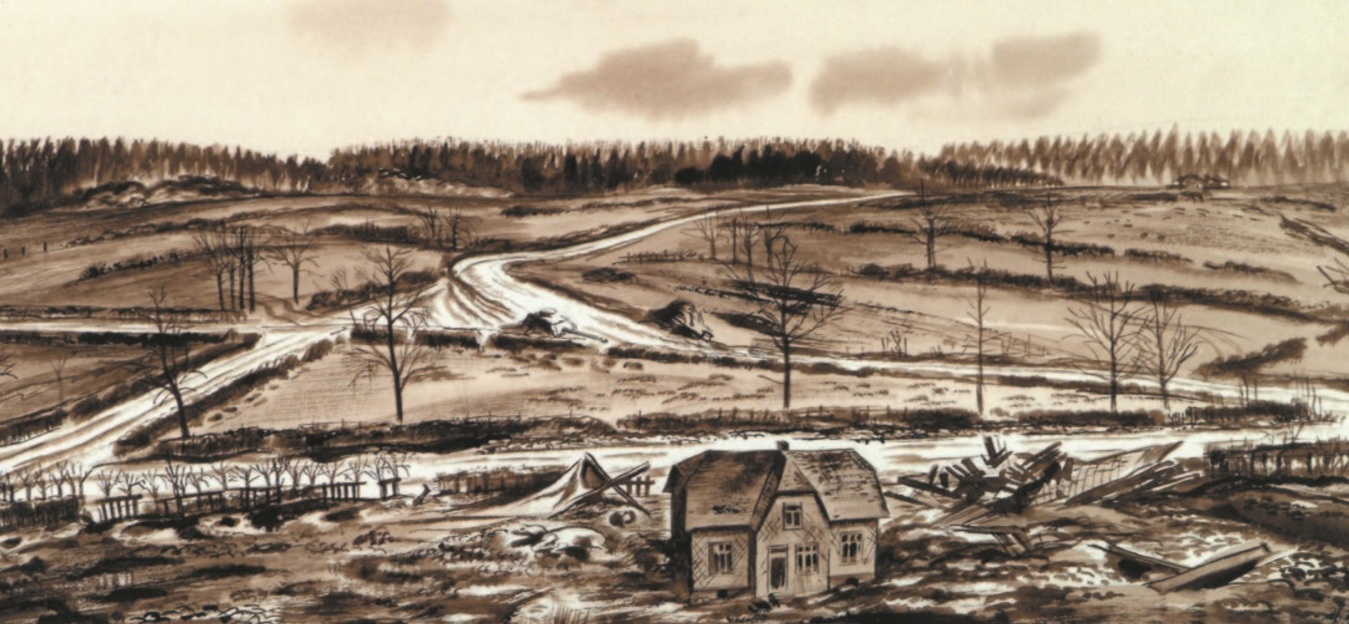
US Army artist Harrison S. Standley preserved the war time look of Lausdell and the Palm farm where so many young men died in a heroic stand (US Army Art).
The following presentation displays some mementoes recovered at Lausdell. They bear the pain, the misery and the sacrifice of so many young men, Americans and Germans, that they are far beyond simple battlefield relics.
Sources:
After Action Report 9th Infantry – December 1944.
Morning reports, 9th Infantry, Co A, B, C, D and HQ.
MIA Project Collection – Interviews and correspondences with:
Major William F. Hancock, Capt Glenn M. Harvey, 1Lt John C. Granville, 1Lt Allyn H. Tedmon, Jr, S/Sgt Odis Bone, Sgt Joseph Busi, PFC Harlin F. Coffinger and SS 1Lt Helmut Zeiner.

